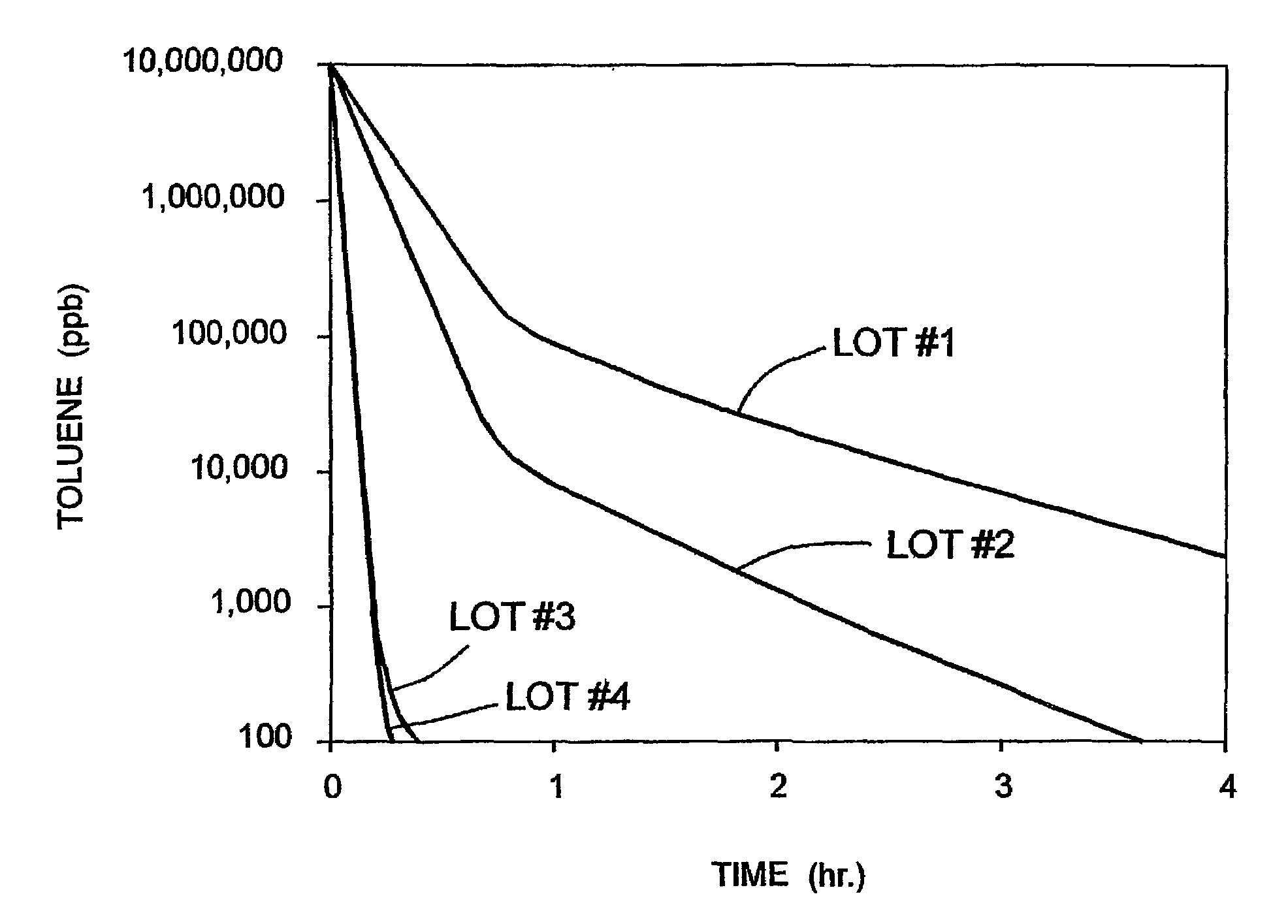Decontamination of RPET through particle size reduction
a technology of rpet and particle size reduction, which is applied in the field of decontamination of rpet through particle size reduction, can solve the problems of significant decontamination, adversely affecting the quality and performance of finished products, and a large amount of pet was
- Summary
- Abstract
- Description
- Claims
- Application Information
AI Technical Summary
Benefits of technology
Problems solved by technology
Method used
Image
Examples
example
[0027]RPET flakes contaminated with toluene are comminuted to produce four lots of RPET particles having the following approximate particle diameter size ranges:
[0028]
Lot #10.0331–0.0234 inchLot #20.0197–0.0165 inchLot #30.0083–0.0059 inchLot #40.0059–0.0021 inch
These four lots of RPET particles are individually solid-stated at a temperature of about 160° C. under vacuum. Samples of each lot are extracted at various times during the solid-stating process, and the concentration of toluene contaminant is measured. It is observed that the rate of decontamination over time increases with decreasing RPET particle size. This phenomenon is illustrated in the FIGURE.
PUM
| Property | Measurement | Unit |
|---|---|---|
| Diameter | aaaaa | aaaaa |
| Diameter | aaaaa | aaaaa |
| Particle size | aaaaa | aaaaa |
Abstract
Description
Claims
Application Information
 Login to View More
Login to View More - R&D
- Intellectual Property
- Life Sciences
- Materials
- Tech Scout
- Unparalleled Data Quality
- Higher Quality Content
- 60% Fewer Hallucinations
Browse by: Latest US Patents, China's latest patents, Technical Efficacy Thesaurus, Application Domain, Technology Topic, Popular Technical Reports.
© 2025 PatSnap. All rights reserved.Legal|Privacy policy|Modern Slavery Act Transparency Statement|Sitemap|About US| Contact US: help@patsnap.com


